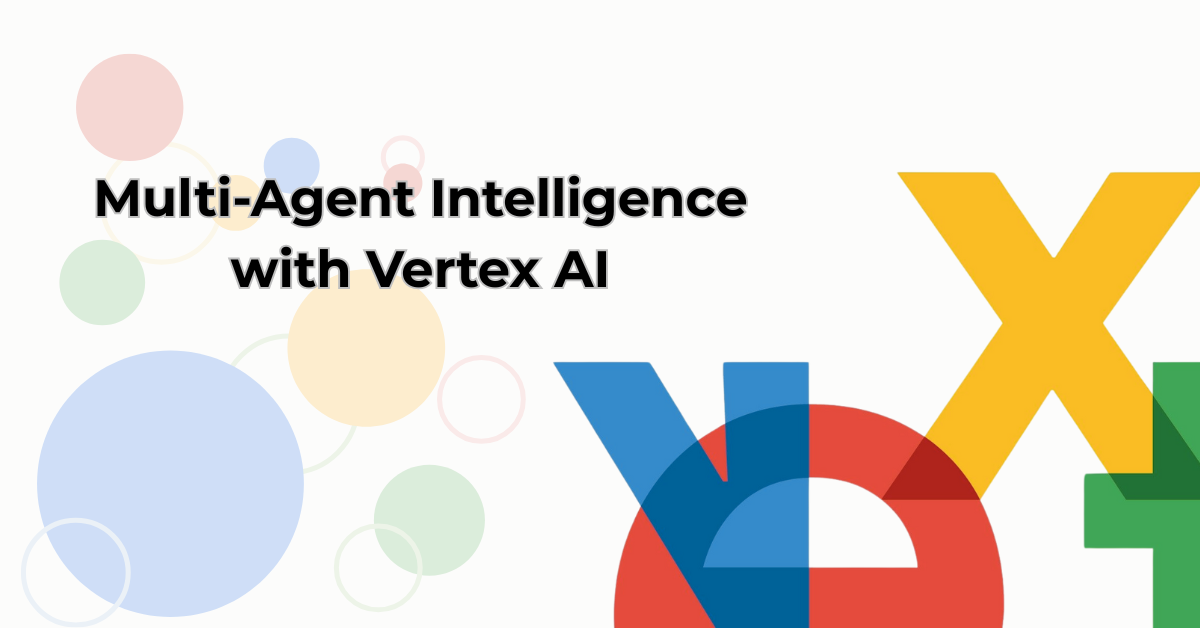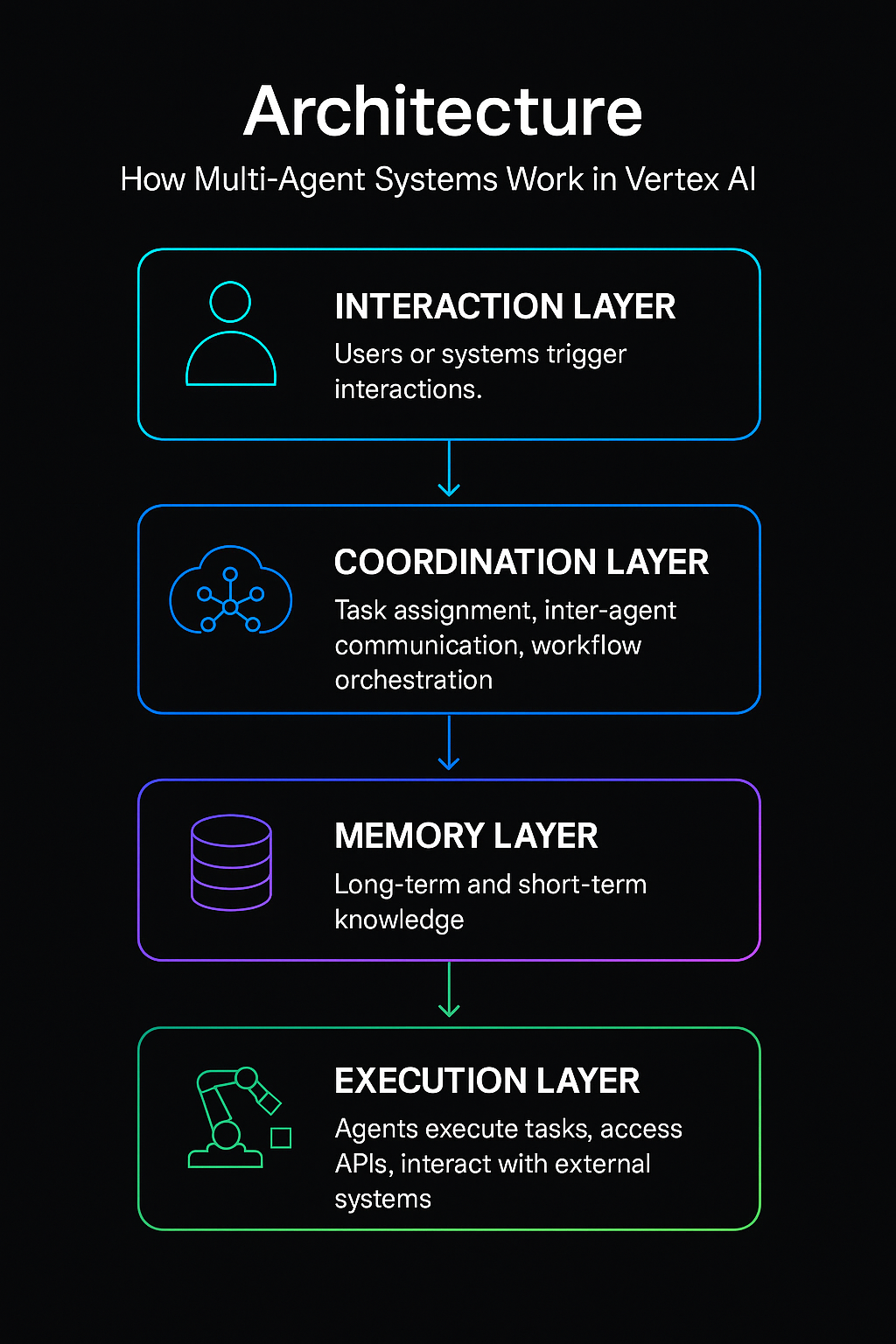Building the Future of Enterprise AI with Vertex AI’s Multi-Agent Capabilities

Introduction
Artificial Intelligence (AI) is experiencing a seismic shift. The days when a single AI model could meet an enterprise's diverse needs are over. As business challenges increase in complexity, our AI systems must evolve accordingly. The answer? Multi-agent AI Systems. Google Cloud’s Vertex AI now supports this powerful framework, allowing intelligent agents to collaborate, share information, and solve complex problems in modular and scalable ways.
In this in-depth blog, we’ll explore the concept of Multi-Agent AI, highlight the cutting-edge updates from Vertex AI, demonstrate real-world applications, and dive into its future potential.
What Are Multi-Agent AI Systems?
Multi-agent systems consist of multiple independent AI agents that work together to accomplish a larger objective. Each agent is specialized, autonomous, and capable of reasoning. These agents can communicate, divide tasks, collaborate, and make decisions collectively, making them more flexible and efficient than single-model solutions.
Unlike traditional AI systems, which often try to generalize across a wide array of use cases, multi-agent systems can assign specific roles to agents based on their domain expertise. The result is an intelligent, modular network of agents that can simulate human-like teamwork to perform complex workflows.
Vertex AI: Pioneering Multi-Agent Systems (or)
(Vertex AI: Enabling Collaborative AI Agents)
At Google Cloud Next 2025, Vertex AI was supercharged with tools specifically designed for building and scaling multi-agent systems. These updates represent a significant leap in enterprise-grade AI. Let’s break down the main components:
1. Agent Development Kit (ADK)
The ADK is a toolbox for developers to quickly build, test, and deploy agents. It includes predefined templates, reusable logic modules, and robust integration options with existing data ecosystems.

2. Agent Engine
This core runtime environment powers communication, decision-making, and memory sharing between agents. It ensures agents coordinate effectively while managing concurrency, prioritization, and data integrity.
3. Agent Playground
A low-code/no-code sandbox allows teams to visualize and simulate how agents interact in a real-world scenario. This is especially useful for rapid prototyping, debugging, and stakeholder demonstrations.
4. Agent Garden
A public and private marketplace for pre-trained, customizable AI agents. Enterprises can browse agents developed by Google or third-party vendors, reducing time-to-deployment and cost of development.

Architecture: How Multi-Agent Systems Work in Vertex AI
Vertex AI’s multi-agent system is composed of several core layers:
Interaction Layer
This is where users or systems trigger interactions. The system intelligently routes these triggers to the appropriate agents based on context.
Coordination Layer
It handles task assignment, inter-agent communication, and workflow orchestration, and ensures that the agents work together seamlessly without conflicts.
Memory Layer
Stores long-term and short-term knowledge accessible by agents to ensure contextual consistency over time.
Execution Layer
The agents execute tasks, access APIs, and interact with external systems. Depending on the workflow design, they may work in parallel or pass results to one another.
This architecture is designed to be modular, extensible, and cloud-native—ideal for enterprise environments with diverse needs.

How It Differs from Traditional AI Models
Traditional AI systems typically rely on a monolithic architecture, where a single, large model is trained to handle multiple tasks. While this can be efficient for narrow or well-defined problems, it often becomes rigid, hard to scale, and less effective when dealing with complex, dynamic enterprise workflows.
Here’s how Vertex AI’s multi-agent model redefines this paradigm:
Traditional AI vs Multi-Agent AI Systems
| Feature | Traditional AI Models | Multi-Agent AI Systems (e.g., Vertex AI) |
|---|---|---|
| Architecture | Monolithic or single-model | Modular and distributed with multiple agents |
| Task Handling | General-purpose, often trained for a single task | Specialized agents assigned to specific tasks |
| Scalability | Limited by model complexity and resource overhead | High scalability via task decomposition |
| Adaptability | Less flexible to context changes or evolution | Agents adapt individually for agile responses |
| Collaboration | Minimal or no inter-model communication | Real-time communication and collaboration among agents |
| Development Time | Long training and retraining cycles | Faster development with reusable agent modules |
| Maintenance | Requires retraining or fine-tuning the whole model | Independent updates or replacement of agents |
| Use Case Fit | Best for isolated, well-defined problems | Suited for complex, multi-step workflows |
| Fault Tolerance | Model failure affects the entire system | Redundant agents improve reliability and fault tolerance |
| Example | Image classification, chatbots | Supply chain orchestration, customer support systems |
This shift enables businesses to adapt faster, achieve higher precision in task handling, and future-proof their AI infrastructure.

Benefits for Enterprise Adoption
Modularity and Scalability
Multi-agent systems allow enterprises to break down complex processes into manageable components. Need to analyze customer data, detect anomalies, and trigger support alerts? Assign each task to a specialized agent.
Agility and Time-to-Market
With the ADK and Agent Garden, companies can dramatically reduce AI development time. New agents can be spun up, trained, and deployed independently.
Domain-Specific Intelligence
Each agent can be tailored to a specific business process—from finance to logistics to HR—enabling precision and efficiency.
Enterprise-Grade Orchestration
Google's Agent Engine ensures that agents work together harmoniously, even across multi-cloud or hybrid-cloud environments. This makes it easy to integrate AI into your existing infrastructure.
Real-World Use Cases
1. Customer Support Automation
In modern contact centers, AI must handle everything from FAQs to complex technical troubleshooting. With Vertex AI:
- Agent A greets the customer and collects basic information.
- Agent B accesses CRM records.
- Agent C diagnoses the issue and offers resolutions.
- Agent D escalates to a human agent if needed.
This orchestrated interaction drastically reduces wait times and improves customer satisfaction.
2. Supply Chain Optimization
In a dynamic global economy, logistics requires split-second decisions:
- Agent A forecasts demand based on historical sales.
- Agent B monitors inventory in real-time.
- Agent C evaluates shipping constraints.
- Agent D optimizes distribution across warehouses.
Each agent works autonomously yet collaboratively, ensuring a lean and responsive supply chain.
3. Healthcare Coordination
From diagnosis to discharge, healthcare is a perfect setting for multi-agent AI:
- Agent A analyzes medical history and test results.
- Agent B suggests a treatment plan.
- Agent C schedules appointments.
- Agent D updates insurance and billing records.
These agents ensure that doctors and staff spend more time with patients and less time on administration.
4. Financial Services and Wealth Management
Multi-agent systems can manage vast and sensitive datasets:
- Agent A performs fraud detection.
- Agent B manages client portfolios.
- Agent C suggests personalized investment options.
- Agent D ensures compliance with financial regulations.
By distributing these roles, financial institutions gain speed, security, and customer trust.
The Future of Multi-Agent AI Systems
Multi-agent systems represent a critical leap toward truly intelligent digital ecosystems. As businesses shift toward hyper-personalization, dynamic decision-making, and autonomous operations, these systems offer an architectural foundation that scales with complexity.
In the coming years, we can expect:
- Increased Interoperability: Agents will communicate across platforms, vendors, and protocols with seamless coordination.
- Autonomous Learning: Agents will learn from data and one another, enabling more robust decision-making.
- Wider Adoption: As tooling improves, multi-agent AI will become standard in retail and government industries.
- Ecosystem Integration: Expect agents to natively connect with CRMs, ERPs, IoT devices, and blockchain networks.
Organizations that invest in this architecture today will be positioned to lead in tomorrow’s intelligent economy.
Final Thoughts
Vertex AI’s multi-agent capabilities mark a pivotal moment in the evolution of AI. These systems deliver the collaborative intelligence enterprises need to tackle modern challenges - from managing complex workflows to scaling customer interactions.
By embracing this model, businesses can foster a more adaptive, intelligent, and future-ready digital environment. Whether you're an enterprise innovator or a tech strategist, now is the time to explore how multi-agent systems can reshape your AI roadmap.
Get Started
As AI capabilities expand, so do the possibilities for forward-looking businesses. Industry leaders are now exploring how modular, collaborative AI architectures can reshape everything from customer support to supply chains.
At Info Services, staying ahead means understanding the tools and the transformative impact they can drive. Platforms like Vertex AI enable enterprises to move beyond static automation into dynamic intelligence.
Explore more about Vertex AI on the official Google Cloud website: https://cloud.google.com/vertex-ai

FAQ'S
1. What are multi-agent systems in the context of Vertex AI?
In Vertex AI, multi-agent systems are collaborative AI agents designed to handle different tasks in a shared workflow. Each agent is specialized—like a domain expert—and communicates contextually with others. This architecture supports dynamic decision-making and allows enterprises to build scalable, intelligent workflows that mimic coordinated human teams with greater speed and accuracy.
2. Why should enterprises consider using multi-agent AI architecture?
Multi-agent AI helps enterprises break down large, complex tasks into specialized subtasks, each handled by a purpose-built agent. This leads to faster processing, better modular design, and more resilient AI systems. For enterprise users, it means greater agility, improved business outcomes, and the ability to deploy domain-specific intelligence across departments.
3. Can multi-agent systems in Vertex AI adapt to real-time changes?
Yes, multi-agent systems in Vertex AI are context-aware and can respond to real-time data. Agents continuously exchange insights and adjust their actions based on new inputs or external triggers—ideal for scenarios like customer support escalation, supply chain disruptions, or real-time financial analysis, where responsiveness is mission-critical.
4. How do Vertex AI’s agents maintain security and compliance in enterprise environments?
Each agent in Vertex AI operates within the secure framework of Google Cloud, inheriting its enterprise-grade controls, IAM, and encryption protocols. Additionally, agents can be designed to enforce compliance by embedding rules, guardrails, and audit tracking, ensuring that AI decisions are explainable, aligned with policy, and legally defensible.
5. What differentiates Vertex AI’s multi-agent orchestration from traditional automation tools?
Unlike rigid automation tools that follow fixed rules, Vertex AI’s multi-agent orchestration enables intelligent delegation. Agents can negotiate tasks, request help from other agents, and self-correct. This dynamic adaptability mimics human reasoning, making it ideal for enterprise environments where conditions, data, or priorities shift rapidly.

